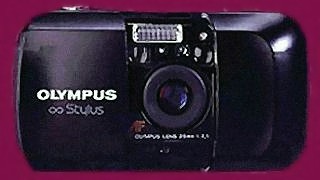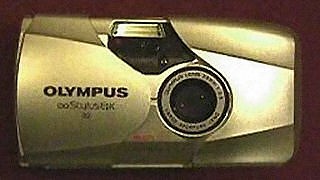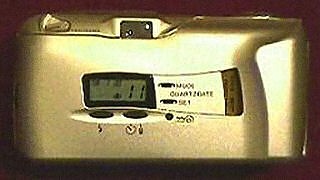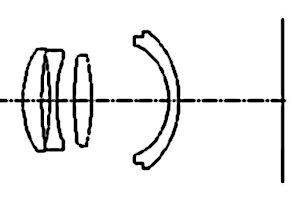The "old" Stylus: a classic and a bargain!
Back in 1991, while still using my SLR for taking pictures on slide film, I bought a backup camera: the original Olympus Infinity Stylus (called Mju in Europe). It was inexpensive, compact and handy to carry along with (or instead of) my SLR system for shooting family pictures and mementos on negative film.

Its f/3.5 lens was of surprisingly good quality: most of my 8x10 or 11x14 prints (close to the standard European 18x24 or 30x40 cm formats) were almost as good as these shot with SLR lenses.
It also had a precise autofocusing down to 35 cm (rare among pocket cameras), quite accurate two-zone exposure metering and a neat clamshell design.
True, the construction was all-plastic, but you wouldn't expect anything else from a camera in this price range (I paid $130); a metal-bodied model would cost you three to eight times more.
Four years later I've lost that camera and immediately replaced it with the same model. This one had a bad luck: in 1997 it stopped working after I spilled beer on it (please don't ask me how). Yeah, splashproof it certainly wasn't.
As I was already addicted to having a small pocket camera on me most of the time, it was time to see my friendly photo dealer again. This time I decided to get a newer model: the Stylus Epic (in Europe called Mju-2). And, boy, am I delighted!
Note of 2003: The original Stylus is no longer being manufactured (more than ten years, not too shabby!), but you can buy a clean, working one second-hand for $20-$30 - an incredible bargain, as it still will deliver pictures better than most P&S cameras! By the way, the camera splashed with beer was repaired in Poland at the expense of $3 or so, and still serves the current owner just fine.
And in Spring of 2003, Popular Photography ran a story on the Stylus Epic, with conclusions coinciding with mine. Well, with the inroads digital cameras are making lately, this may be the last great small camera we will see...
Stylus Epic: how to improve on a good thing
It is risky to try to improve upon a classic, but it took me just a few months with the new camera to conclude that the good people of Olympus succeeded in every aspect.
The new Epic (in Europe: Mju-2) is also quite inexpensive: you can get one for $90 or so (as of 2002), even in the "deluxe" version: gold, with date imprint (for which I paid $160 back in '96).
Really, I consider date imprinting a next-to-useless gadget (although it may be handy on the first frame of each film) but the gold metallic look is hard to resist.
The first thing you notice is that the new model is even smaller than the previous one (watch your fingers: it is very easy to put them in front of the lens or the flash). It is also quite pretty, especially the gold version.
The wedged shape makes the camera look even smaller than it really is. The clamshell cover closes, hiding the lens, flash and viewfinder.

The back contains all controls: date imprint mode and clock setting (right), and, most importantly, flash mode and self-timer buttons (bottom).
The bottom buttons scroll through the displayed symbols — self-explanatory; to switch into spot metering mode (or back), both have to be pressed at the same time.

More important, however, are improvements in the specs, all very welcome (and yes, the Epic is splashproof!).
- First of all, the lens is now a 35 mm f/2.8 (which means that the film gets 56% more light at full aperture); its construction has also been changed from three to four elements. This should make it even better; I wasn't able to see a significant difference in my enlargements, but the tests and reviews I've read are raving about the lens, comparing it to lenses sold for SLRs.Second, the Epic has a much wider range of shutter speeds: from 4 to 1/1000 of a second; unmatched by any other point-and-shoot camera.The two-zone exposure metering (providing extra exposure and/or a burst of the flash for backlighted subjects) has been complemented with a spot-metering mode; I'm using it rarely, but when I need it, I really do.Last but not least, the Epic's autoexposure can now be switched to the "night flash" mode, using long shutter times to expose the background, while the foreground is still illuminated mostly by the flash. (Warning: the exposure times can be very long in this mode; try to hold the camera very steady or even use a tripod!)
